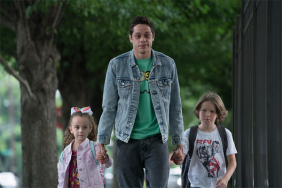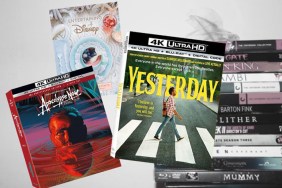There’s a moment in the 2001 documentary The Gleaners and I where director Agnes Varda films herself parting and brushing her hair, exposing her gray thinning roots. Then she cuts to a close-up on her hands, wrinkled, dotted with liver spots. Seventy-three years old at the time, the legendary French filmmaker, who is almost giddy at the possibilities afforded her by her new digital camera, doesn’t play the moment for pity, doesn’t despair over aging. Paradoxically, when she bluntly states that her hair and hands are simply telling her, “…the end is near,” she’s enthralled by the process of change and seems almost invigorated by cataloguing its effects. This is a woman for whom life itself, with its inevitabilities and uncertainties, is art-in-progress.
The film opens with quick dictionary definitions of glean and gleaner, gives a succinct historical perspective on the gendering of the act of gleaning, and wraps it up with a brisk sojourn through art history to look at famous paintings of women gleaners. It takes two minutes or less for all of that to transpire, but in that brief pocket of time the viewer is prepped for the magnetic, artful sprawl of Varda’s documentary. Ostensibly it’s a film about the history and trajectory of gleaning – people harvesting fields by hand, stooping to the ground to get whatever fruit, vegetable or grain they’re gathering. It soon becomes a pungent, non-didactic look at poverty, food waste, modern day gleaners (the poor who pick through farm crops, dumpsters, garbage cans, and farmer’s market refuse) and the lack of social safety nets. It peels back another layer to emerge as a treatise on the transformative and healing power of art, and finally settles into a soulful meditation on mortality and what we leave behind.
Varda takes us from potato fields where poor families are gleaning what big harvesting machinery has left behind, to her own home, where she finds a kind of art even in her leaking roof and the mold that has grown around it. In between there are stops in cafes, flea shops, assorted farms and orchards, and museums. At every stop, Varda interviews everyday people about their lives, and the ways “gleaning” has or does shape their lives. She’s a masterful interviewer, asking direct but non-leading questions that lead to her subjects offering moving, funny, personal stories, even as Varda reflects on her own life and career (in the most modest of terms).
The result is a surprisingly seamless artist manifesto (Varda would hate that word being used in conjunction with her work) that espouses the need for basic human kindness, asks us to see the art in the everyday world around us, and is a love letter to cinema and the new technologies that make filmmaking possible today. It’s inspiring from opening frame to closing credits.









